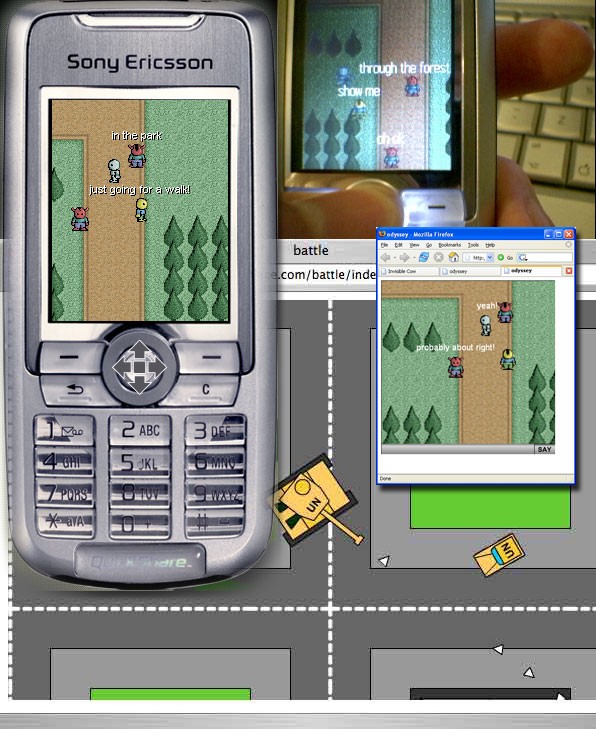 |

Submitted by , posted on 20 January 2005
|
 |

Image Description, by

These are a few images from projects which make use of my cross-platform (Flash/Java/J2ME so far) networking engine.
This was created to power multi-user Flash-based web games. Including 'twitch' style action games.
The bottom image shows a Mac web browser running one of the first tests which used the system : a simple action game which comes across a bit like a top down BF1942 and supports many players driving different types of vehicle around a scrolling map and shooting each other!
The other images show my J2ME chat room for mobile phones. This uses 90% of the same server code and the J2ME client library to provide a scrolling map which players can walk around with their friends and chat to each other.
To demonstrate the cross-platform nature of the system, the right-middle image shows a Flash port of the chat room running in Firefox. Users on mobile phones and the web can interact with each other and neither they nor the server know/care which client others are using.
Features :
Bespoke Java server
Flash/Java/J2ME client libraries
Easily extensible
Robust client-server protocol
Both client and server-side movement prediction
Supports scripted entities
|
|

